Abstract
A useful method for isolating and recognizing Haemophilus ducreyi from chancres and buboes of male patients is presented. A total of 41 clinical isolates of H. ducreyi were recovered from 33 patients over an 8-year period, and the experience with the 15 most recent isolates is presented in detail. Chocolate agar supplemented with 1% Iso VitaleX and 5% sheep blood agar were prepared, using Trypticase soy and Mueller-Hinton Agar bases, and incubation conditions included ambient, capneic, and anaerobic environments. Mueller-Hinton agar was clearly superior over Trypticase soy agar for isolation of H. ducreyi, although there was little difference between 5% sheep blood and supplemented chocolate agar. Growth in ambient air and under anaerobiasis was poor or lacking, whereas growth in 5 to 7% CO2 was good to luxuriant. Heat-inactivated and fresh (unheated)human blood clot tubes also were used for selective isolation. Although the rates of isolation from the two types of clot tube were not significantly different, unheated clot tubes were superior to heated clot tubes because of reduced level of contaminants. Gram stain characteristics taken from blood clot tubes and solid media, cellular and colonial morphology of the bacilli, and lack of oxidase, catalase, and biochemical activity except nitrate reductase were determinant factors. The results of this study demonstrated that successful isolation of H. ducreyi can be achieved with a minimal amount of resources and expertise.
Full text
PDF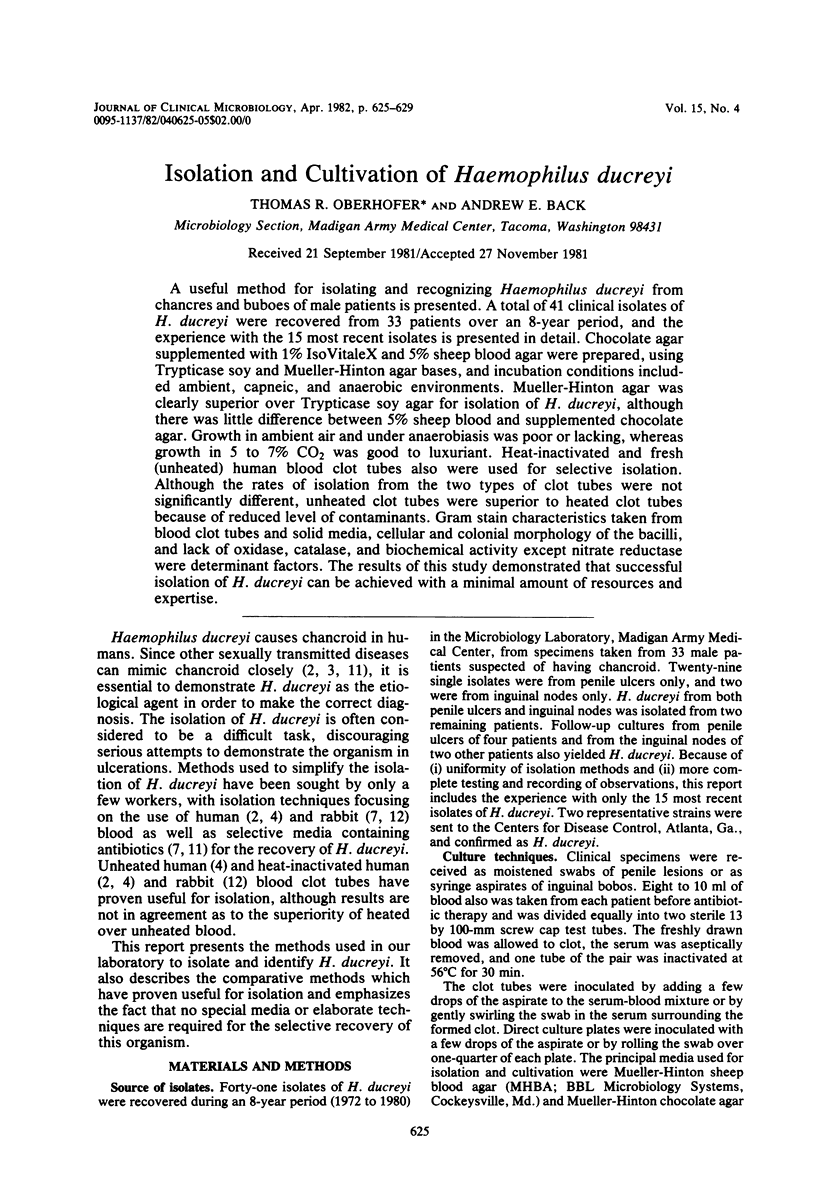
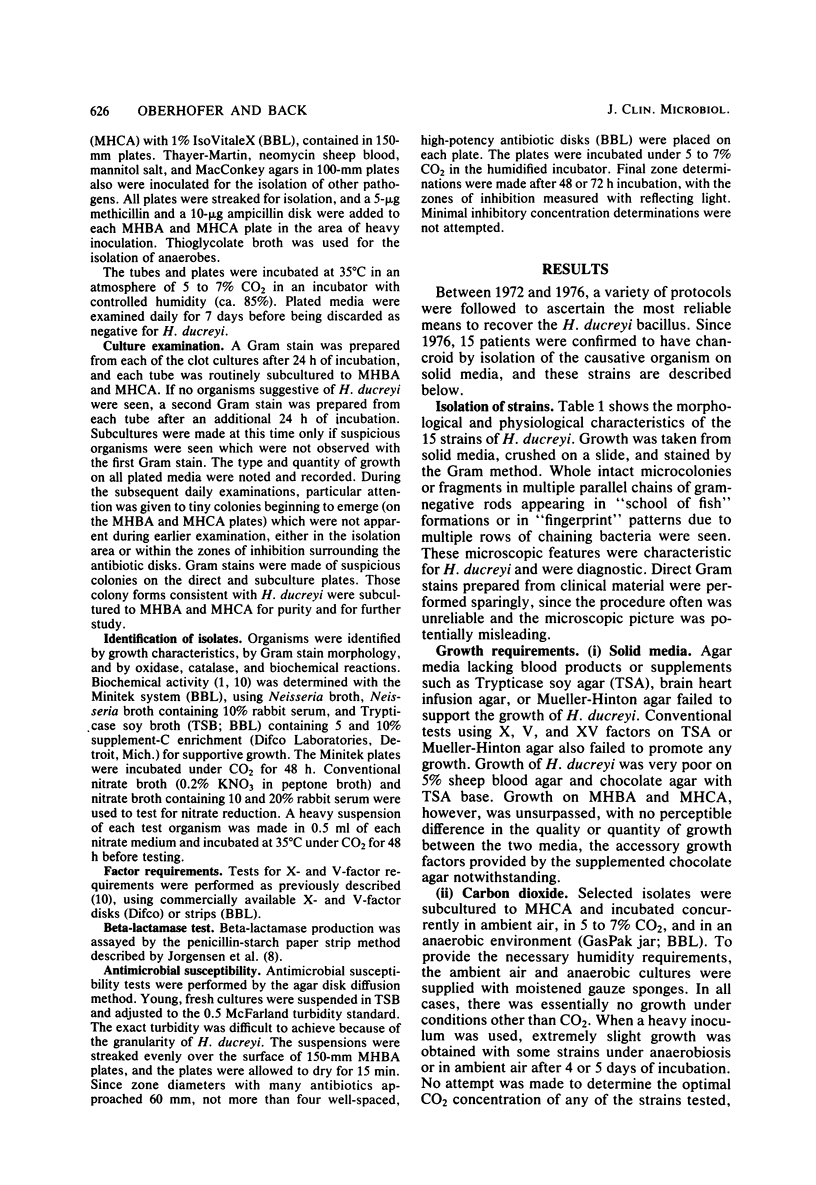
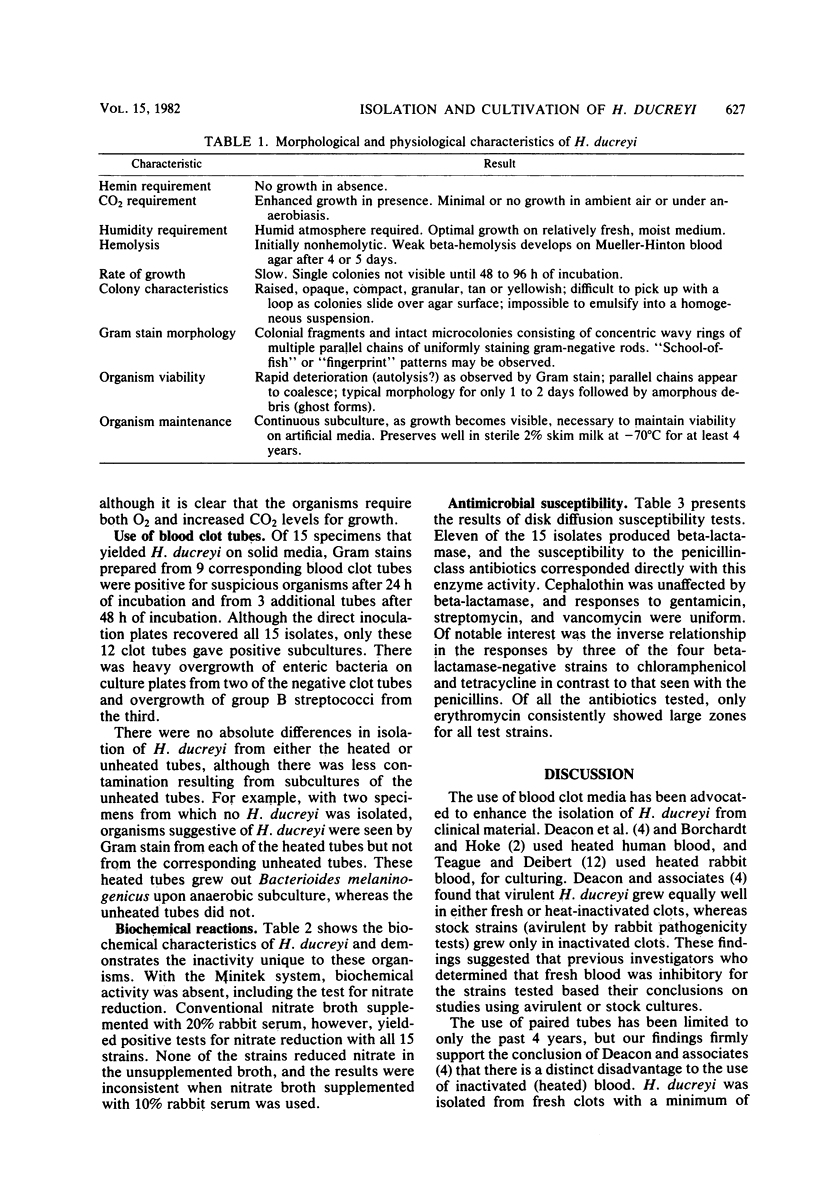
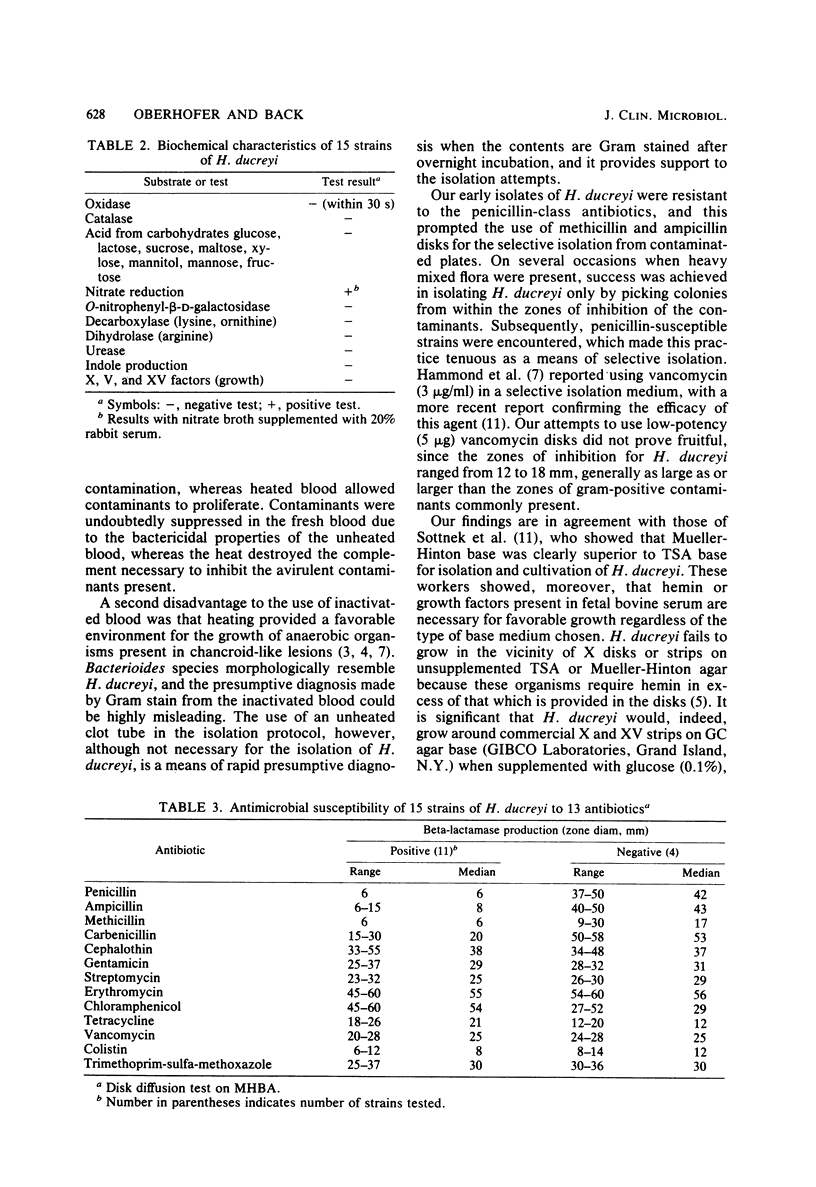
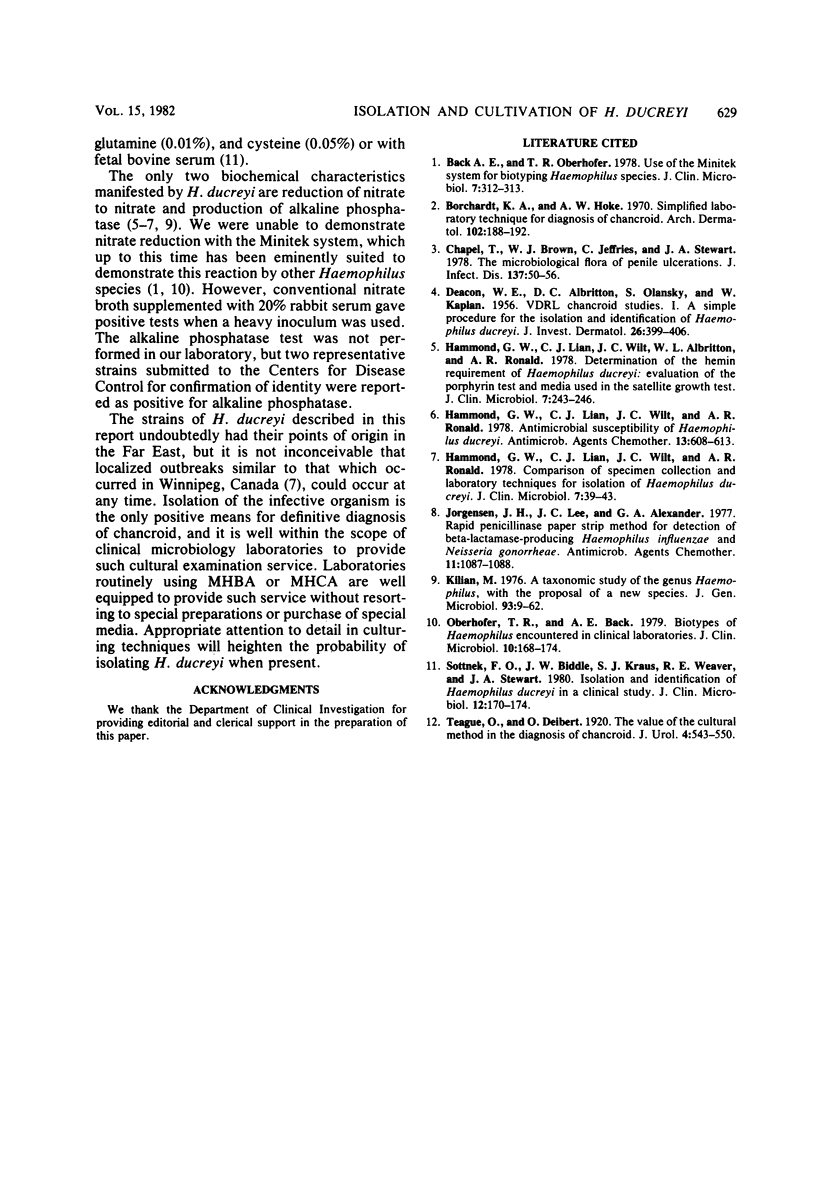
Selected References
These references are in PubMed. This may not be the complete list of references from this article.
- Back A. E., Oberhofer T. R. Use of the Minitek system for biotyping Haemophilus species. J Clin Microbiol. 1978 Mar;7(3):312–313. doi: 10.1128/jcm.7.3.312-313.1978. [DOI] [PMC free article] [PubMed] [Google Scholar]
- Borchardt K. A., Hoke A. W. Simplified laboratory technique for diagnosis of chancroid. Arch Dermatol. 1970 Aug;102(2):188–192. [PubMed] [Google Scholar]
- Chapel T., Brown W. J., Jeffries C., Stewart J. A. The microbiological flora of penile ulcerations. J Infect Dis. 1978 Jan;137(1):50–56. doi: 10.1093/infdis/137.1.50. [DOI] [PubMed] [Google Scholar]
- DEACON W. E., ALBRITTON D. C., OLANSKY S., KAPLAN W. V.D.R.L. chancroid studies. I. A simple procedure for the isolation and identification of Hemophilus ducreyi. J Invest Dermatol. 1956 May;26(5):399–406. doi: 10.1038/jid.1956.51. [DOI] [PubMed] [Google Scholar]
- Hammond G. W., Lian C. J., Wilt J. C., Albritton W. L., Ronald A. R. Determination of the hemin requirement of Haemophilus ducreyi: evaluation of the porphyrin test and media used in the satellite growth test. J Clin Microbiol. 1978 Mar;7(3):243–246. doi: 10.1128/jcm.7.3.243-246.1978. [DOI] [PMC free article] [PubMed] [Google Scholar]
- Hammond G. W., Lian C. J., Wilt J. C., Ronald A. R. Antimicrobial susceptibility of Haemophilus ducreyi. Antimicrob Agents Chemother. 1978 Apr;13(4):608–612. doi: 10.1128/aac.13.4.608. [DOI] [PMC free article] [PubMed] [Google Scholar]
- Hammond G. W., Lian C. J., Wilt J. C., Ronald A. R. Comparison of specimen collection and laboratory techniques for isolation of Haemophilus ducreyi. J Clin Microbiol. 1978 Jan;7(1):39–43. doi: 10.1128/jcm.7.1.39-43.1978. [DOI] [PMC free article] [PubMed] [Google Scholar]
- Jorgensen J. H., Lee J. C., Alexander G. A. Rapid penicillinase paper strip test for detection of beta-lactamase-producing Haemophilus influenzae and Neisseria gonorrhoeae. Antimicrob Agents Chemother. 1977 Jun;11(6):1087–1088. doi: 10.1128/aac.11.6.1087. [DOI] [PMC free article] [PubMed] [Google Scholar]
- Kilian M. A taxonomic study of the genus Haemophilus, with the proposal of a new species. J Gen Microbiol. 1976 Mar;93(1):9–62. doi: 10.1099/00221287-93-1-9. [DOI] [PubMed] [Google Scholar]
- Oberhofer T. R., Back A. E. Biotypes of Haemophilus encountered in clinical laboratories. J Clin Microbiol. 1979 Aug;10(2):168–174. doi: 10.1128/jcm.10.2.168-174.1979. [DOI] [PMC free article] [PubMed] [Google Scholar]
- Sottnek F. O., Biddle J. W., Kraus S. J., Weaver R. E., Stewart J. A. Isolation and identification of Haemophilus ducreyi in a clinical study. J Clin Microbiol. 1980 Aug;12(2):170–174. doi: 10.1128/jcm.12.2.170-174.1980. [DOI] [PMC free article] [PubMed] [Google Scholar]


